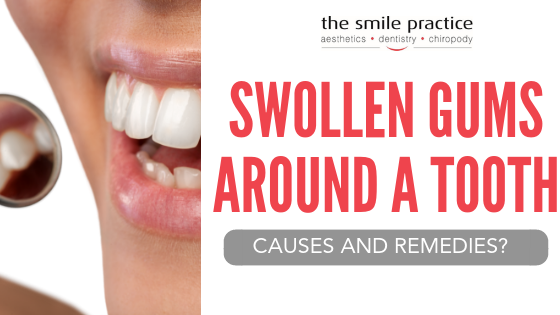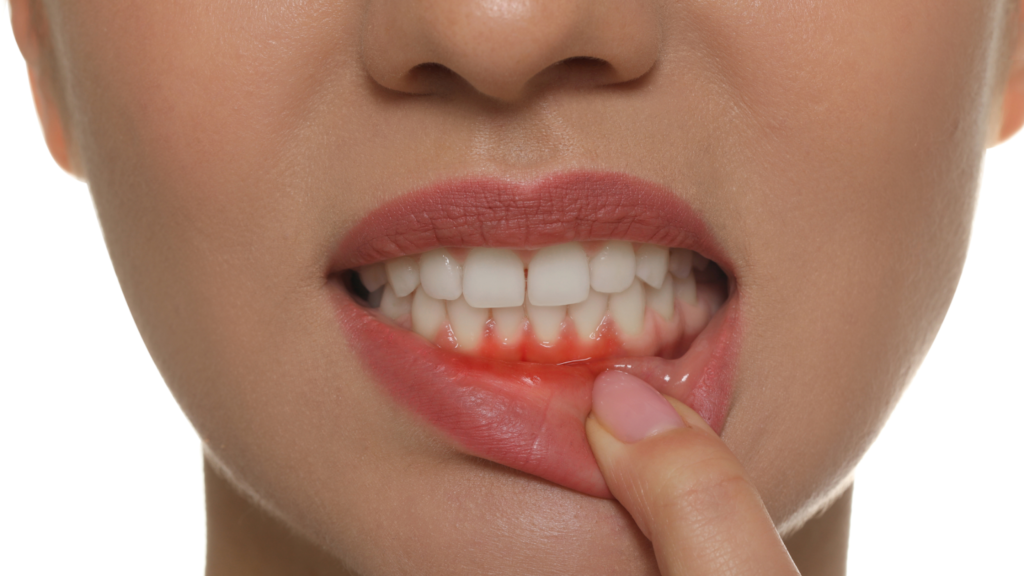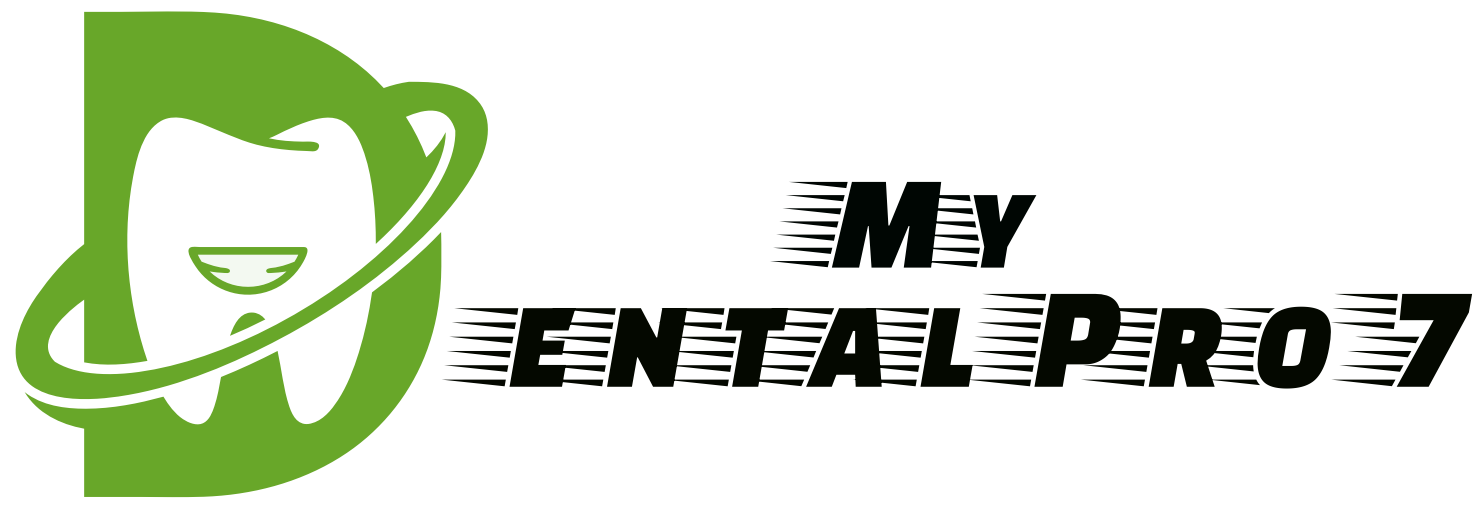
Uncover the Reasons behind Gum Swollen Around One Tooth Overnight
Gum Swelling Around One Tooth Overnight
Have you woken up one morning to find your gum around one of your teeth is swollen or tender? It can be alarming to experience this symptom suddenly, and it is important to understand what might be causing it. This guide will provide an overview of gum swelling around one tooth, the possible causes, pain management, prevention, diagnosis, treatment options, alternative therapies, surgery, common questions, and resources to learn more.
Gum swelling around one tooth could be a sign of infection, inflammation, or trauma. It is important to recognize the signs and seek medical care if the symptom persists or worsens. In this guide, we’ll discuss why it is important to diagnose and treat gum swelling and provide steps you can take to do so. Let’s get started!
Possible Causes of Gum Swelling Around One Tooth
Gum swelling around one tooth can be an indication of many different underlying issues. It is important to recognize the symptoms and consult with your doctor to determine the cause of the swelling and treat it appropriately. In this guide, we will explore the different possible causes behind gum swelling around one tooth, as well as methods to reduce pain and make the condition more comfortable.
Below are some of the possible reasons you may be experiencing gum swelling around one tooth:
- Infections: Infections can occur in the mouth, such as gingivitis, and can cause swelling, redness, and tenderness in the gums around one tooth. This can be caused by bacteria, viruses, or fungus.
- Injury: Injury to the teeth or gums can cause the area around one tooth to swell. This might include a chipped tooth, cracked filling, or trauma to the gum.
- Allergic Reaction: Allergic reactions to certain foods, products, or medications can cause swelling in the gums around one or more teeth.
- Nutritional Deficiencies: Nutritional deficiencies can lead to gum problems, including swelling in the gums around one or more teeth.
- Medications: Certain medications, such as steroids, can cause side effects such as swollen gums around one tooth.
It is important to note that there could be other potential causes behind gum swelling around one tooth, so it is important to consult with your doctor to determine the underlying cause before attempting to treat it.

Pain Management for Gum Swelling Around One Tooth
If you have gum swelling around one tooth, it can be very uncomfortable and painful. If left untreated, the pain can escalate and become unbearable, making it difficult to eat or speak.
Fortunately, there are a few methods you can use to reduce the pain and discomfort associated with this condition. Here are some tips on pain management for gum swelling around one tooth:
- Take over-the-counter (OTC) pain relief medications such as ibuprofen or aspirin.
- Apply a warm compress to the affected area. Just make sure it’s not too hot.
- Gently brush your teeth and floss regularly, being careful not to irritate the swollen area.
- Rinse with salt water or an oral rinse containing antiseptic ingredients like tea tree oil or menthol.
- Eat soft foods that are easier to chew and don’t put pressure on the swollen area.
- Avoid any food or drink that is very hot or cold as it may aggravate the area.
- Apply a natural oil, such as clove oil, to the area for its anti-inflammatory and pain relieving effects.
These methods should help relieve some of the pain and discomfort associated with gum swelling around one tooth. However, if the pain persists or worsens, it’s important to see your dentist or doctor as soon as possible to determine the underlying cause and appropriate treatment plan.
Prevention: Avoiding Gum Swelling Around One Tooth
Although swollen gums around one tooth can be caused by a variety of circumstances, there are some measures that you can take to help prevent the condition from occurring. While it’s important to note that there is no guaranteed way to avoid gum swelling around one tooth, taking the following precautions may help reduce your risk.
Good Oral Hygiene
One of the best ways to avoid gum swelling around one tooth is to practice excellent oral hygiene. This includes brushing your teeth twice a day with fluoride-containing toothpaste, flossing at least once daily, and rinsing with an antiseptic mouthwash. Doing this will help remove bacteria and plaque from your teeth and gums, reducing the likelihood of infection.
Diet and Nutrition
Eating a healthy, balanced diet can also help keep your gums healthy and reduce your risk of gum swelling. Make sure to include plenty of fresh fruits and vegetables in your diet and choose lean proteins that are high in omega-3 fatty acids. Aim for a low-sugar diet, as sugar promotes plaque and bacterial growth. Additionally, it’s important to take a daily multivitamin to ensure you are getting all the necessary nutrients to promote good oral health.

Quitting Smoking and Reducing Alcohol Consumption
Smoking and excessive drinking can damage the gums and increase your risk of developing gum swelling around one tooth. For this reason, it’s important to quit smoking and reduce your alcohol consumption as much as possible, if not completely. Quitting smoking has many other health benefits, too, so it’s something you should consider regardless of your risk of gum swelling.
Regular Checkups
Finally, it’s important to visit your dentist regularly for routine checkups. At these checkups, your dentist can assess your gums for early signs of gum swelling or infection. If you catch a potential issue early on, it can help reduce the severity of gum swelling in the future.
Diagnosis
If you suspect that your gum swelling around one tooth overnight is caused by something more sinister than bacteria, you should seek medical advice and diagnosis. Different specialists can help determine what the underlying cause is and provide you with a treatment plan.
The type of doctor and specialist you’ll need to consult depends on the underlying cause of your symptoms. It may be necessary to be referred to a specialist such as a dentist, orthodontist, periodontist, oral surgeon, or endodontist. It’s possible these specialists may need to work in collaboration to diagnose the cause and provide the appropriate treatment.
Your dentist may carry out an X-ray, CT scan, or MRI to check for infection, physical damage, and any other abnormalities in the surrounding bone and tissue. They may also take a biopsy if they suspect cancer or other serious conditions.
You may also be referred to an ENT (ear, nose and throat) specialist if you are suffering from sinus issues that could be causing gum swelling. An allergist may be recommended to determine if you have allergies that could be contributing to the swelling.
Your doctor will discuss your medical history and assess your symptoms to determine which specialty you need referred to. It’s important to take the time to accurately explain your symptoms so they can accurately recommend the right specialist.
Treatment Options
When dealing with gum swelling around one tooth, it is important to seek out the right treatment in order to reduce pain and prevent reoccurring swelling. There are numerous medications available that might be helpful in treating the cause. Additionally, there are steps one can take to help prevent gum swelling around one tooth from occurring again in the future.
Over-the-counter pain relief medications such as ibuprofen (Advil) or naproxen can be taken to help reduce inflammation and manage any accompanying pain. If these do not provide adequate relief, your dentist may prescribe a stronger medication, such as an antibiotic, to treat any underlying infection.
In addition to medication, it is important to keep the area clean and free from plaque and bacteria. Brushing twice a day and flossing after every meal can help reduce plaque buildup and keep gums healthy. Swishing with a mouthwash containing fluoride can also reduce plaque accumulation and help prevent gum disease.
It is also important to avoid foods that are high in sugar or acidic. Eating or drinking these types of food can cause swelling to worsen.
Finally, quitting smoking can also be beneficial in treating gum swelling around one tooth. Smoking can contribute to gum disease and cause bacteria to accumulate, which can lead to swelling and discomfort.
Alternative Therapies for Gum Swelling Around One Tooth
In cases where gum swelling around one tooth is causing pain and discomfort, sometimes alternative therapies can be used in order to reduce the symptoms. This can include the use of supplements and other therapies such as acupuncture.
Supplements that can be used to help reduce the inflammation in the area and provide relief include omega-3 fatty acids, vitamin C, and magnesium. Omega-3 fatty acids act as an anti-inflammatory and can reduce pain and swelling. Vitamin C is an antioxidant and supports a healthy immune system. Magnesium helps to reduce inflammation and reduce spasms in the muscles.
Acupuncture is another alternative therapy that can be used to reduce inflammation and improve overall health. This is done by inserting thin needles into specific points on the body. Acupuncture has been found to be effective in reducing pain and increasing circulation.
Another alternative therapy used to reduce gum swelling around one tooth is chiropractic care. Chiropractors use massage, manipulation, and adjustments to reduce pain and swelling in the area.
Finally, herbal remedies can be used to reduce inflammation. Herbal remedies such as ginger, turmeric, and boswellia have all been found to be effective in reducing inflammation and providing relief from pain.
Alternative therapies can be a great way to reduce the symptoms of gum swelling around one tooth and make it more comfortable. It’s important to speak with your doctor or healthcare practitioner before taking any supplements or alternative therapies.
Surgery
In some cases, surgery may be recommended as a last resort for those suffering from swollen gums around one tooth. Surgery carries potential risks and benefits so it is best to discuss with a medical professional before making any decisions.
Surgery is usually only necessary when other non-surgical treatments have not been successful or if the swelling is caused by a more serious underlying condition. The most common type of surgery for gum swelling is a gingivectomy, which is the removal of excess gum tissue from around the affected tooth. Other surgeries such as a crown lengthening or gingival flap can also be done to reduce the swelling and promote healing.
Surgeries come with potential risks, so they should not be taken lightly. Bleeding, infection, and pain are some of the most common risks associated with any type of surgical procedure. Additionally, some surgeries may require general anesthesia, which also comes with risks. It is important to consider these risks and discuss them with a doctor before undergoing any type of surgery.
On the other hand, surgery can provide relief from the swollen gum and allow for improved oral health. A successful surgery can make brushing and flossing easier, while reducing the risk of further swelling or infection. It can also help those who suffer from extreme sensitivity due to swollen gums.
Common Questions
Gum swelling around one tooth overnight can feel scary and overwhelming. It is understandable that anyone with this condition would have many questions. Some common questions people may have include:
- What is causing the gum swelling?
- How long will treatment take?
- Are there foods I should avoid?
- What are the risks and benefits of surgery?
It is important to seek out professional medical advice in order to find answers to these questions. A qualified doctor or dentist can provide you with an accurate diagnosis and customized treatment plan tailored to your individual needs.
Your doctor may be able to provide you with an estimated length of time for treatment, depending on the underlying cause and the severity of your swelling. They may also be able to provide insight into lifestyle modifications that could help reduce the likelihood of gum swelling around one tooth, such as avoiding certain foods or grinding your teeth.
Additionally, if your doctor recommends surgery, they will discuss the risks and benefits of the procedure with you and answer any questions you may have.
Resources
If you are looking for additional information about gum swelling around one tooth, there are many online resources available. Support groups can be a great way to connect with others who have gone through a similar experience, and share stories or tips that have been helpful. Websites can also provide in-depth research about different causes and treatment for gum swelling.
A few helpful resources include:
- National Oral Health Alliance – Provides information about dental care and insurance.
- American Academy of Periodontology (AAP) – An association dedicated to the periodontal community.
- Dental Fear Central – A forum where members can support each other and ask questions about specific dental procedures.
- American Dental Association (ADA) – A professional association representing dentists in the United States.
- American Association of Orthodontists (AAO) – Dedicated to the practice of orthodontics.
It is important to remember that these resources are not intended to replace medical advice from your healthcare provider. If you have any concerns or questions, it is important to seek medical advice from your dentist or doctor.
Gum swelling around one tooth can be an alarming and uncomfortable situation that sometimes occurs overnight. It is important to recognize the symptoms of gum swelling and identify the potential causes in order to get the most effective treatment plan. In this guide, we will discuss what potential causes are behind gum swelling around one tooth, methods to reduce pain, steps one can take to try to prevent it from happening again, the type of doctor or specialist that should be consulted, treatments to try including medications, alternative therapies, and surgery, questions someone may have such as how long treatment typically takes, and helpful resources that might provide additional information. We will begin by discussing the potential causes behind gum swelling around one tooth. There are several potential causes for gum swelling, including periodontal disease, or infections caused by bacteria within the mouth. Other possible causes include infection due to trauma, reaction to medication, or a reaction to a cosmetic procedure. We will then move onto looking at how to manage pain while waiting for treatment, and discuss ways to prevent gum swelling from reoccurring. Next, we will discuss the type of doctor and specialist that should be consulted to determine the underlying cause of the swelling. Depending on the cause, the doctor might recommend different treatments such as antibiotics or flossing to fight the bacteria. We will also look at other treatments one might try such as medications and alternative therapies, as well as when surgery might be recommended as a last resort and its risks and benefits. We will then address common questions about the condition such as how long treatment typically takes, or what foods to avoid. This will include advice from dental professionals. Finally, we will provide links to helpful resources such as support groups or websites that might provide additional information. To conclude, gum swelling around one tooth can be an uncomfortable and frightening experience, but with the knowledge from this guide, you can be better informed about the potential causes and available treatment options. It is important to seek medical care for gum swelling, so if you are experiencing any signs of swelling, contact your dentist right away.
Closing
It is important to seek medical attention if you have experienced gum swelling around one tooth overnight. Symptoms may seem minor and temporary, but they can be an early sign of a more serious problem that requires treatment. It is better to act quickly to prevent any further damage or discomfort. Your physician will be able to identify the underlying cause and offer advice on the best course of action.
Remember, taking the initiative to address your dental health can lead to a healthier, happier life for you and your family.
Questions and Answers about Gum Swollen Around One Tooth Overnight
- Q: What is the cause of gum swelling around one tooth?
A: The cause of swollen gums around one tooth can vary. It could be caused by an abscessed molar, a cavity, gum disease, inflammation, orthodontic issues, or even trauma such as biting down too hard on something. - Q: What can I do to reduce pain?
A: Pain management for swollen gums around one tooth should involve gentle brushing and flossing, rinsing with warm saltwater and applying a cold compress to reduce inflammation. Over-the-counter medications might also be helpful in treating the pain associated with swollen gums. - Q: What steps can I take to prevent reoccurrence?
A: Steps one can take to help prevent reoccurrence of swollen gums include proper oral hygiene practices such as brushing twice a day and flossing daily, reducing sugary foods and drinks, quitting smoking, and visiting your dentist regularly for checkups. - Q: What type of doctor should I see for diagnosis?
A: In most cases, you should visit a general dentist for diagnosis for swollen gums around one tooth. However, more complex issues might require a specialist such as an endodontist or periodontist. - Q: What medications might be used to treat the cause?
A: Depending on the underlying cause of the swollen gums, your dentist might prescribe antibiotics to treat an infection, anti-inflammatory medications to reduce inflammation, or a mouthwash that can reduce bacteria in the mouth. - Q: Are there alternative therapies I can try?
A: Yes, there are some alternative therapies that may help reduce gum swelling. These include consuming herbal supplements such as echinacea, exercising to reduce stress, and dental acupuncture. - Q: When might surgery be recommended?
A: Surgery might be recommended as a last resort if other treatments are not successful. This type of surgery typically involves removing infected or diseased tissue from the gums or dental implants to replace damaged teeth.
